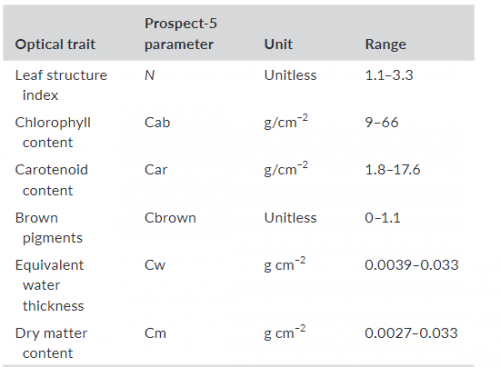Studies in the field of remote sensing of biodiversity are increasing, accompanied by the development of a variety of approaches and methodologies to better assess multiple dimensions of biodiversity in different ecosystems. One such approach is the Spectral Variation Hypothesis (SVH) which proposes that the pixel-to-pixel variability of the spectral response in a remotely sensed image is driven by multiple factors including environmental heterogeneity and diversity of leaf and canopy traits (biochemical and structural traits), in variable proportion depending on the scale of observation.
A SHOWCASE paper, titled Which optical traits enable an estimation of tree species diversity based on the Spectral Variation Hypothesis?, set out to understand which optical indicator traits (OTIs), retrieved from biophysical models and applied to Sentinel-2 images, enable an estimation of tree species diversity based on the Spectral Variation Hypothesis. For this purpose, researchers estimated several OTIs based on the inversion of the coupled radiative transfer models (RTMs) PROSPECT-5 and INFORM using Sentinel-2 images for the years 2017, 2018 and 2019 in a coniferous mountain forest in the eastern Italian Alps (South Tyrol province). They successfully tested the Spectral Variation Hypothesis for each leaf biochemical and structural trait using Rao's Q as heterogeneity index and validated them against Shannon's H values calculated as species diversity index derived from data collected in situ.
This study represents a first step to understanding the relationship between OTI heterogeneity and species diversity, allowing us to better understand how the SVH behaves in forest ecosystems for rapid assessment of tree species diversity in topographically highly complex regions. This could guide field sampling and localization of biodiversity hotspots.
Read the full paper here.
Photo: Optical traits with the corresponding PROSPECT-5 parameters. Range shows the ranges of OTI values used in this study.
